| Solar eclipse of January 16, 2037 | |
|---|---|
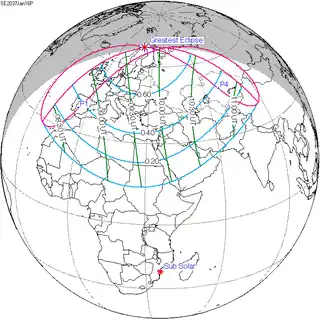 Map | |
| Type of eclipse | |
| Nature | Partial |
| Gamma | 1.1477 |
| Magnitude | 0.7049 |
| Maximum eclipse | |
| Coordinates | 68°30′N 20°48′E / 68.5°N 20.8°E |
| Times (UTC) | |
| Greatest eclipse | 9:48:55 |
| References | |
| Saros | 122 (59 of 70) |
| Catalog # (SE5000) | 9590 |
A partial solar eclipse will occur on Friday, January 16, 2037. A solar eclipse occurs when the Moon passes between Earth and the Sun, thereby totally or partly obscuring the image of the Sun for a viewer on Earth. A partial solar eclipse occurs in the polar regions of the Earth when the center of the Moon's shadow misses the Earth.
Images
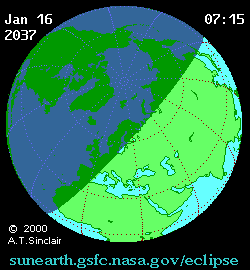
Animated path
Related eclipses
Solar eclipses of 2036–2039
This eclipse is a member of a semester series. An eclipse in a semester series of solar eclipses repeats approximately every 177 days and 4 hours (a semester) at alternating nodes of the Moon's orbit.[1]
Note: Partial solar eclipses on February 27, 2036 and August 21, 2036 occur on the previod lunar year eclipse set.
| Solar eclipse series sets from 2036–2039 | ||||
|---|---|---|---|---|
| Ascending node | Descending node | |||
| 117 | July 23, 2036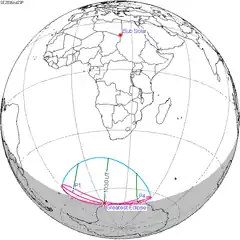 Partial |
122 | January 16, 2037 Partial | |
| 127 | July 13, 2037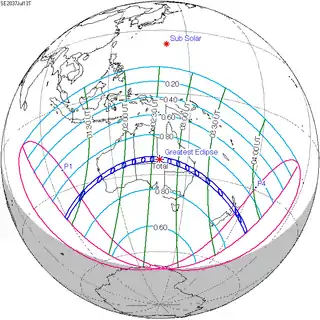 Total |
132 | January 5, 2038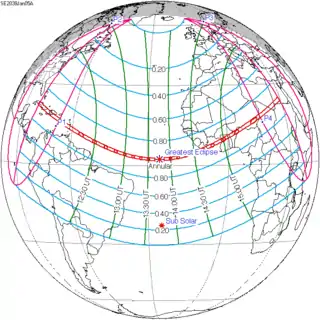 Annular | |
| 137 | July 2, 2038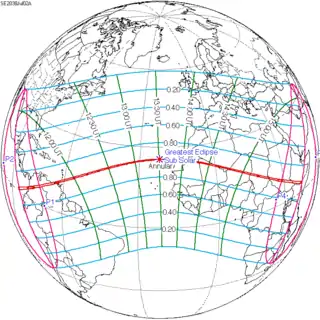 Annular |
142 | December 26, 2038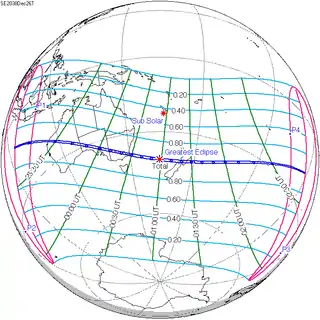 Total | |
| 147 | June 21, 2039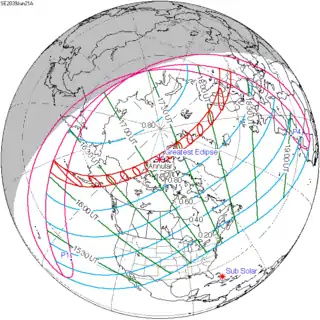 Annular |
152 | December 15, 2039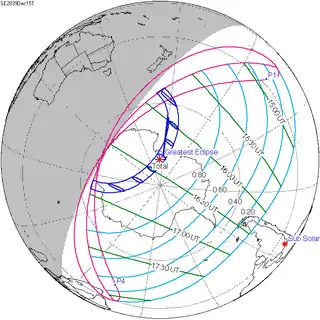 Total | |
Metonic cycle
The metonic series repeats eclipses every 19 years (6939.69 days), lasting about 5 cycles. Eclipses occur in nearly the same calendar date. In addition, the octon subseries repeats 1/5 of that or every 3.8 years (1387.94 days).
| 21 eclipse events between June 12, 2029 and June 12, 2105 | ||||
|---|---|---|---|---|
| June 11–12 | March 30–31 | January 16 | November 4–5 | August 23–24 |
| 118 | 120 | 122 | 124 | 126 |
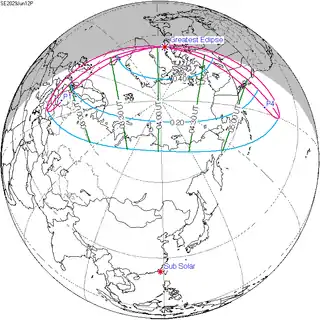 June 12, 2029 |
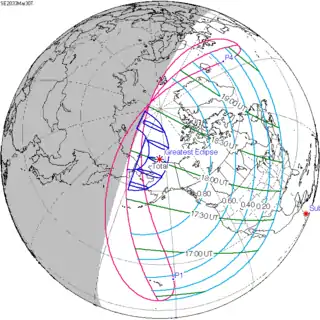 March 30, 2033 |
 January 16, 2037 |
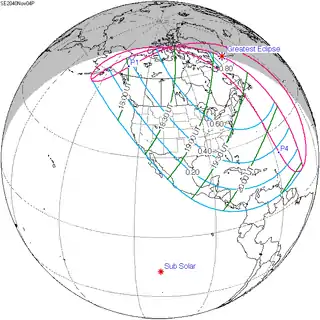 November 4, 2040 |
 August 23, 2044 |
| 128 | 130 | 132 | 134 | 136 |
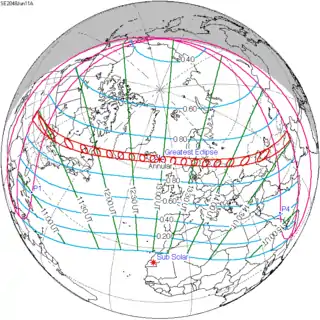 June 11, 2048 |
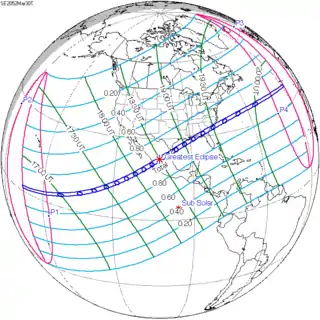 March 30, 2052 |
 January 16, 2056 |
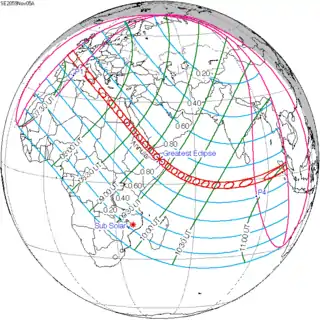 November 5, 2059 |
 August 24, 2063 |
| 138 | 140 | 142 | 144 | 146 |
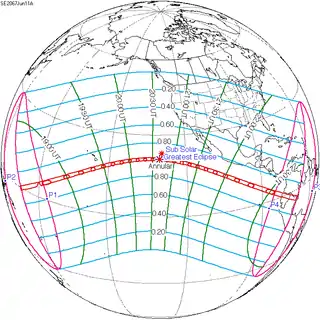 June 11, 2067 |
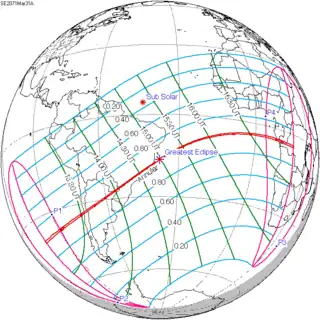 March 31, 2071 |
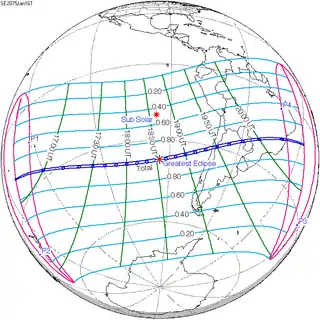 January 16, 2075 |
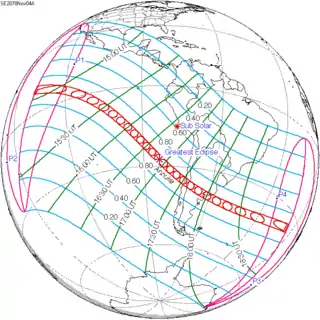 November 4, 2078 |
 August 24, 2082 |
| 148 | 150 | 152 | 154 | |
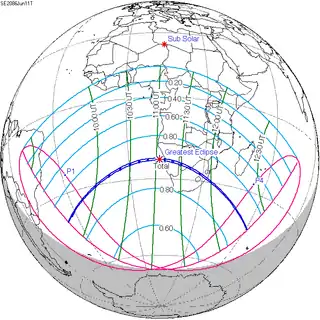 June 11, 2086 |
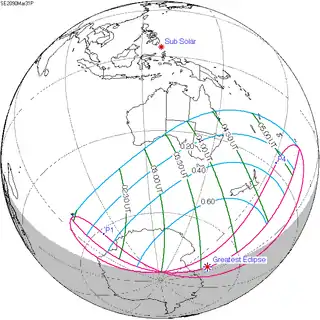 March 31, 2090 |
 January 16, 2094 |
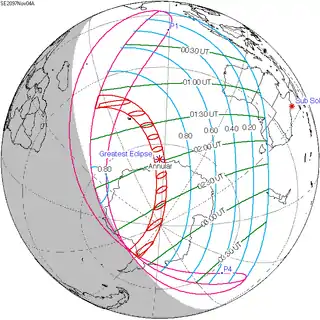 November 4, 2097 | |
References
- ↑ van Gent, R.H. "Solar- and Lunar-Eclipse Predictions from Antiquity to the Present". A Catalogue of Eclipse Cycles. Utrecht University. Retrieved 6 October 2018.
.jpg.webp)

